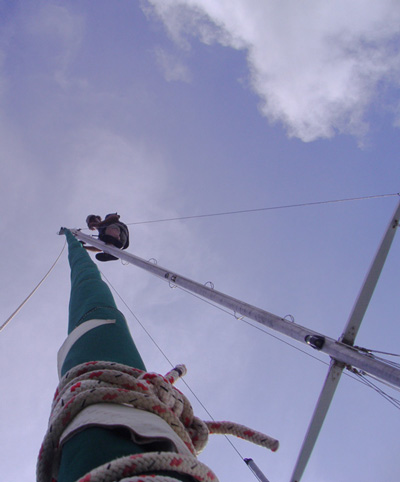Lab rats with empathy (I wonder how Wall Street brokers/bankers would fare in this experiment?), this is interesting, and L,G,&M pretty much sum it all up...
So, you've come into an anchorage, found a place as far as humanly possible from others, and you are saying to yourself "How would "So It Goes" drop their anchor?
Well, to that question the operative word would be slow!
For a start, since we don't have a powered windlass (a really bad invention in my point of view), doing things slowly is no bad thing. Our usual method of dropping the hook is to come to a complete stop then let out just enough rode so the anchor hits bottom and as the boat drifts back we let out chain s-l-o-w-l-y... The idea is to avoid piles or clumps of chain on the bottom and let the force of the boat and its windage slowly dig in the anchor and lay out your chain on the bottom...
The main reason I do it this way is simply because after watching many anchors dig in (or not, in a lot of cases) underwater, I've noticed that they tend to dig in and set a lot better when pulled very slowly on the bottom and that the faster an anchor is pulled the harder it is to set.
The other reason I do it slowly is slow equals less sweat and I'm a sorta/kinda lazy guy. I should also point out it is quite pleasant to sit at the bow and let a few feet of chain out every once in awhile while getting a feel for the new anchorage and its denizens.
Now, astute readers may have noticed that I'm not actually using a motor as part of the process and they would be right.
Once I've got about a 4/1 scope out it's time to make a pot of coffee... The anchor will continue to dig in and the time spent making coffee, and then sitting in the cockpit drinking coffee allows the anchor to do its thing and for me to relax...
When the coffee is finished and providing my little coffee and biscuits session has not been interrupted by the scenery changing more than I'm comfortable with, I amble back to the bow and let out a bit more chain so I have about a 6/1 scope.
The next step is to jump overboard and take a look at the anchor... What I expect to find is the anchor chain laid out at a mostly straight line to the anchor which will be oriented the correct direction and will be set... That seems to be the case 95% of the time. The other 5% I may find that the anchor is sitting on something I'd prefer it not to or that the anchor may in fact be not oriented in the proper direction. For those rare occurrences I simply manhandle the anchor by hand because I'm too lazy to do it with the boat/manual windlass.
Back on the boat, if happy with the anchor, I then continue to let out rode till I have out enough that I will sleep secure knowing I'm not going to go walkabout at 3AM... Right now I'm sitting on a 10/1 scope which is certainly more than needful but it does let me sleep without worry and what's the point of having all that chain in the locker if you're not letting it earn its keep?
My mantra for anchoring is "Too much is just enough" and it always seems to work for me.
Next Monday more about anchoring where room is in short supply....
Listening to Dobie Gray (sadly no longer with us)
So it goes...
Telltail Locations
1 week ago








